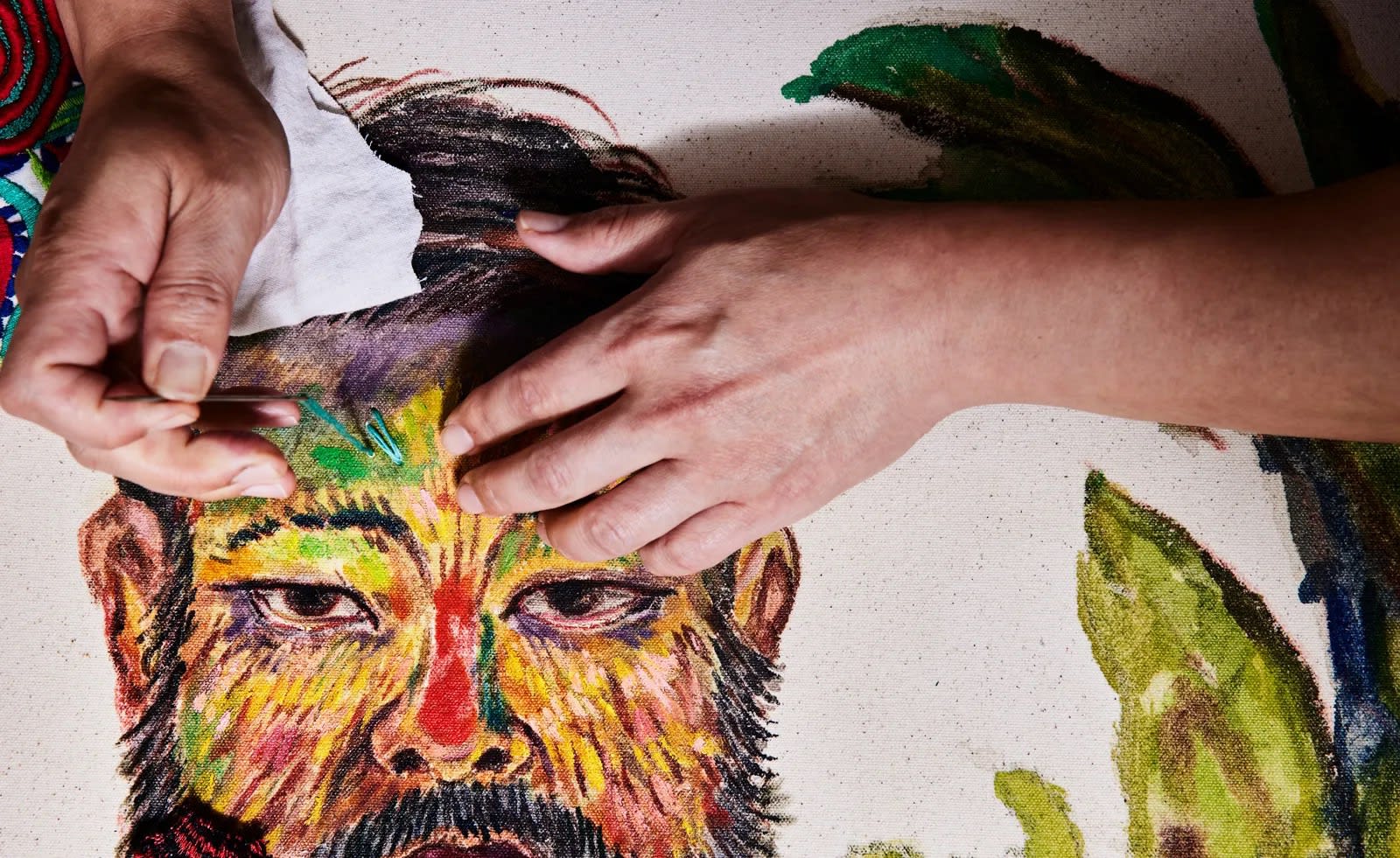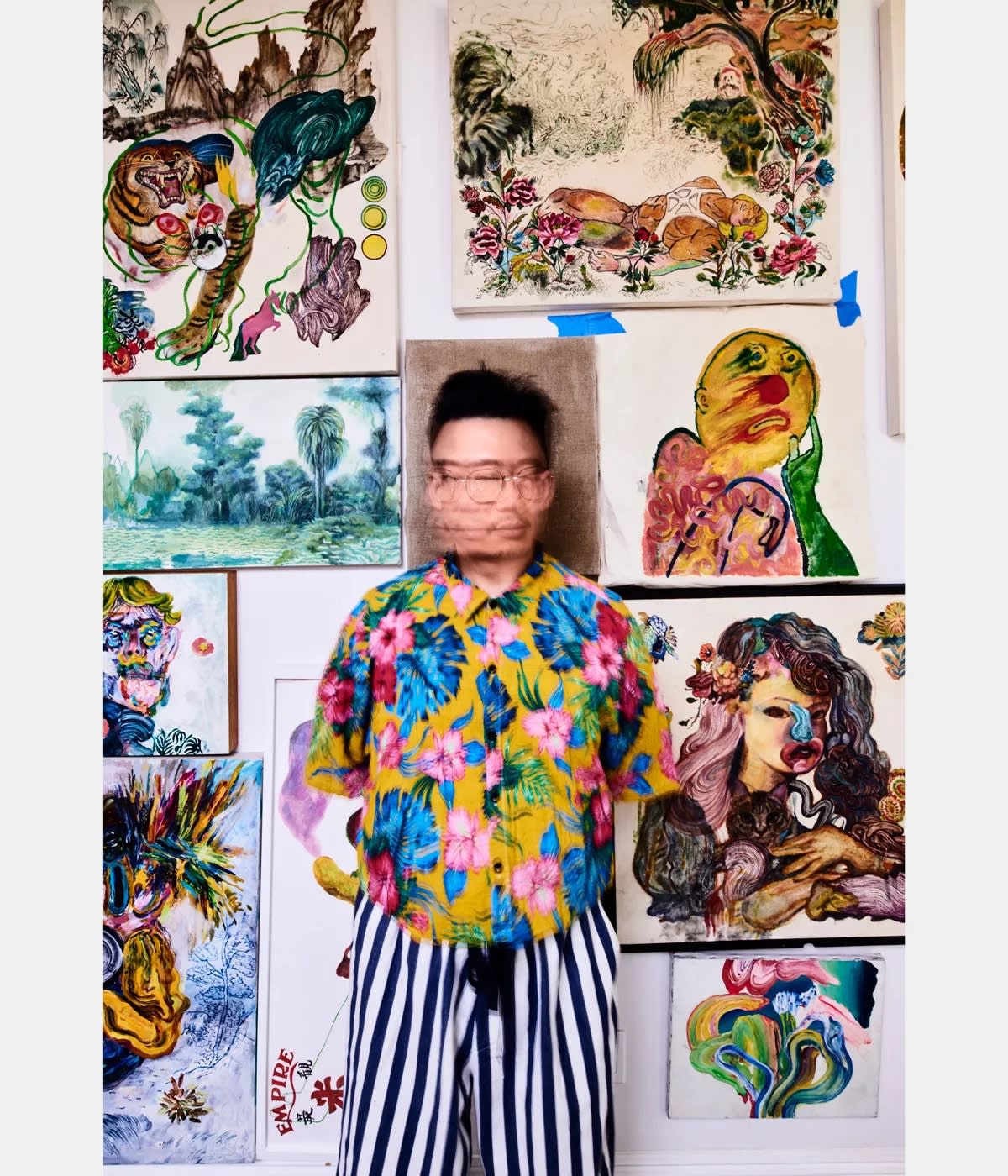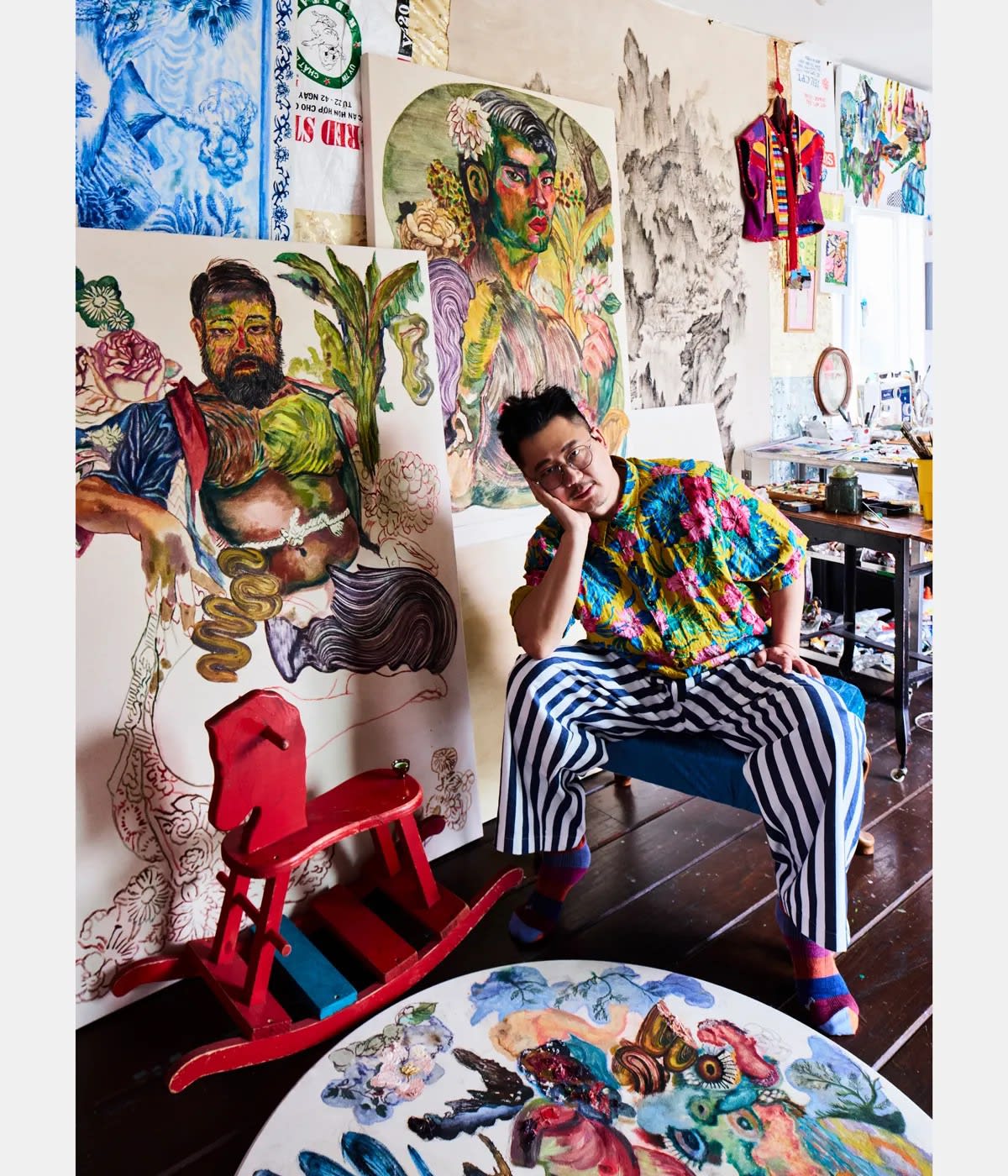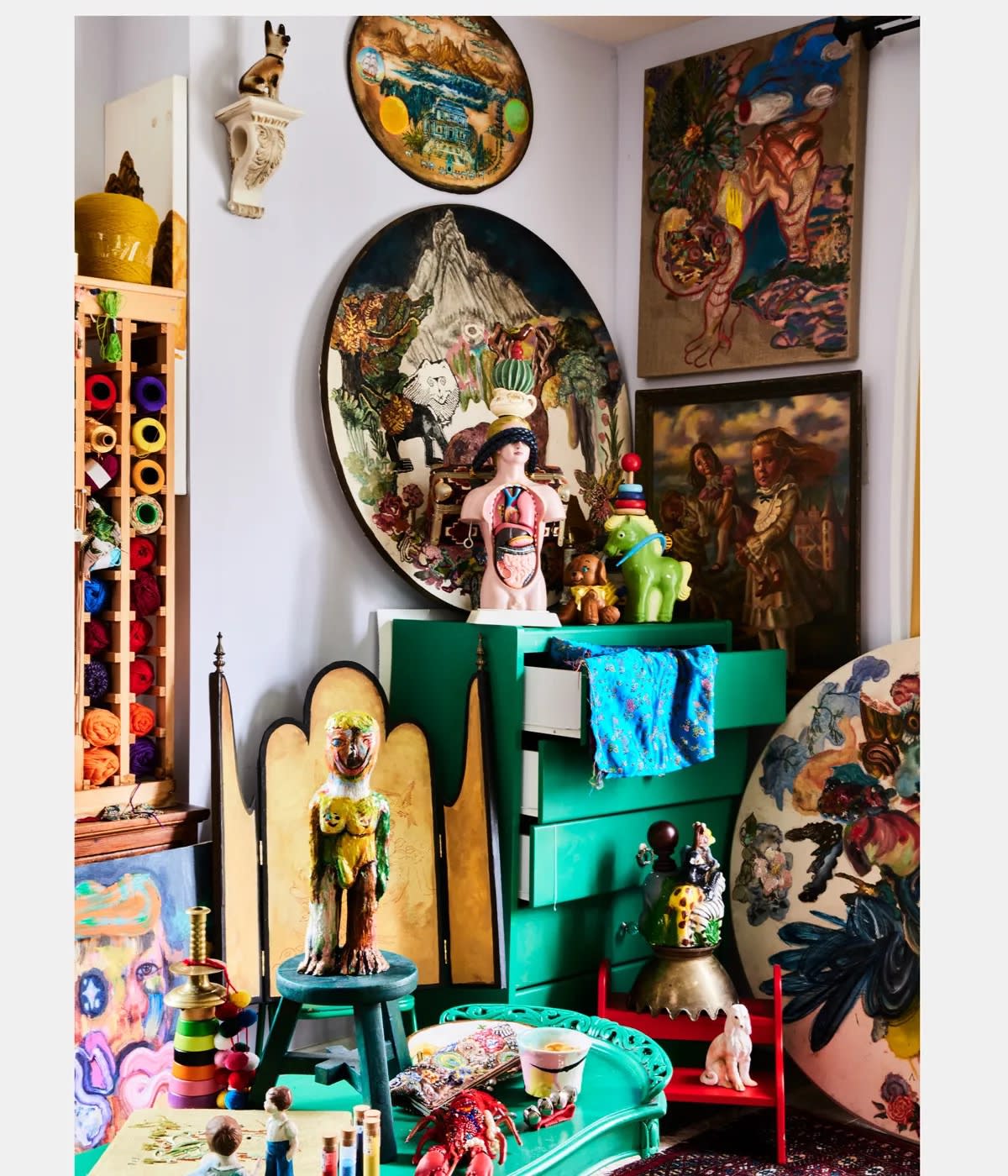

Ken Gun Min working on his artwork 'Daddy lives in Hollywood Hills'
(Image credit: Sam Frost)
To observe the multi-dimensional works of Ken Gun Min is to almost enter another realm. The South Korean-born, LA-based artist illusively combines painting, embroidery and illustration in much of his work, which features complex compositions of fantasy-like imagery that draw from both Eastern and Western worlds. Vibrant and colourful, with symbolic details that entice the eye, Min’s canvases embody a confluence of global cultures that echo the unending barrage of images, emotions and ideas prevalent in society today.

The artist in his Koreatown home/studio, in front of a wall filled with his pandemic paintings
(Image credit: Sam Frost)
Combining historical East Asian motifs and decorative treatments, alongside references to Western pop iconography and mythology, each painting exudes a kaleidoscopic beauty and intensity that enables the artist to address themes of race, gender, sexuality and otherness in a delicate and intimate way.
The mix of concealed and ouvert representations bestows his works with a charged, melancholic energy, which not only alludes to Min’s experiences as a person of colour and minority, having lived in Eurocentric cities around the world for the last two decades, but also as a queer man as well. These layers are all quietly evident from his blending of Western-style oil paints with Korean pearl pigments, the beads and crystals embedded into a number of his works, and the silk thread he uses to embroider and enhance his cross-cultural landscapes and figures.

Min in his studio with his work in progress, Daddy lives in Hollywood Hills. It will form part of a show, focusing on small historic events around LA, which will be held at the Shulamit Nazarian gallery
(Image credit: Sam Frost)
The work clearly resonates. At his gallerist Shulamit Nazarian’s booth at Expo Chicago last April, a solo presentation of Min’s Westlake series – which depicts nude, queer-coded figures with erased faces in dream-like idylls – sold out on the opening day of the fair.
Min lives close to the LA neighbourhood of Westlake, which is home to MacArthur Park. Long considered a hotbed for violence, prostitution and drug dealing, multiple attacks on transgender sex workers in the park in 2021 led to an increased police presence in the area.
‘I interviewed people in the area, including school kids, and they all knew about these stories,’ says Min. ‘Kids who are ten, 11 years old. I really want to tell these stories about the LGBTQ+ community and people of colour.’ He continues, ‘For my solo show [at Nazarian’s LA gallery] in November, I’ll be showing around 20 paintings, all about small historic events around LA.’ Min is also currently working on a group show at Lehmann Maupin in Seoul, slated for next January, as well as a solo museum show at MCA Denver in March 2024.
Born in 1976, Min studied Western painting and art history at Hongik University before leaving for the US at the age of 24, after completing his military service. He arrived in San Francisco in 2001, and enrolled at the Academy of Art University, San Francisco, obtaining his MFA in commercial art and production design. He then took jobs in gaming, animation and film production, ultimately working as a production designer and artist at Lucasfilm for ten years. ‘It was a very privileged environment. I developed the look, lighting, colour and texture for the Star Wars franchise films,’ he says. ‘I worked at Skywalker Ranch in Marin County. I had time to navigate the natural environment during lunchtime, so I did a lot of landscapes during that time.’

Min's studio
(Image credit: Sam Frost)
Min left his day job and moved to LA in 2013. ‘I tried to get into the art world, but there were so many gatekeepers and I couldn’t get in. No one took me seriously. So I took off to Zurich and Berlin to do artist residencies for two to three years. When I came back to LA in 2016, I invited gallery people to visit my studio; some came but didn’t give me a good response.’
One that did was Nazarian. ‘From the moment I saw Ken’s works, I could tell that his voice was clear and his ideas were boundless,’ she says. ‘His landscapes are embedded with equal parts of longing and euphoria. Through his unique process, the paintings become completely otherworldly. His work speaks to me because it connects with his immigrant experience.’
In 2017, Min began incorporating Asian textiles as well as Korean pearl pigments, into his work. ‘I finally figured out that my academic background was totally colonised from Europe and I realised I didn’t like that very plastic, shiny flat surface [of primed gesso], so I created [these canvases] with fabrics and Japanese bookbinding glue. I use the pigments to dye and stain the surface. They really soak into the textiles and that also connects to my Lucasfilm era, where I experimented with texture.’ Layered with embroidery and paint, these materials bring a richness and saturated tonality that plays well with the themes in Min’s work. His creative language continues to tap into pop culture, social media and the internet, while his subject matter is proudly a natural extension of his world, his neighbourhood and his community.
‘I want to raise my voice in the world, especially within this Eurocentric country that I live in. The portrayal of Asian masculinity is particularly an issue in the US,’ he says. We’re portrayed as very feminine, smaller. I want to fight this notion of discrimination and champion representation of the Asian LGBTQ+ man, their sexuality and masculinity.’
kengunmin.com, shulamitnazarian.com
This article appears in the October 2023 issue of Wallpaper*, available in print, on the Wallpaper* app on Apple iOS, and to subscribers of Apple News +.

